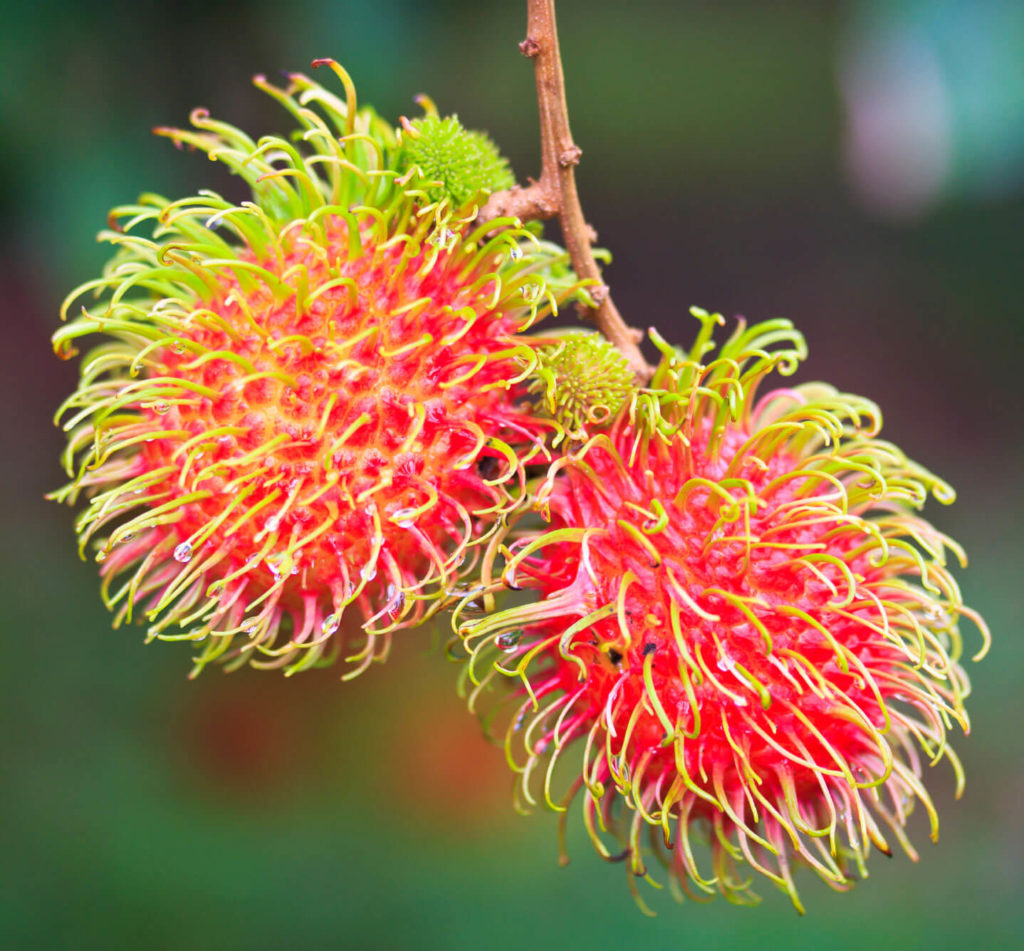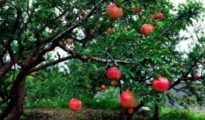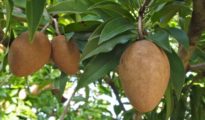If you're lucky enough to live in an area where exotic fruits are abundant and easy to grow, then you're probably familiar with the rambutan fruit. If not, let us give you a little crash course! The rambutan fruit, nephelium lappaceum, is an exotic fruit that is highly prized in Southeast Asia, India, Indonesia, the Philippines, and Malaysia. It looks like a spiky/hairy lychee fruit, and also tastes like one in the sense that it is a little bit sweet and a little bit sour. The fruit, or berry, is oval shaped and contains a single seed. The outer appearance of the rambutan is orange/reddish with fleshy spines. Today you'll be learning how to grow rambutan and where exactly you can grow it! As you may expect, it's not everywhere!
The rambutan tree is usually grown in tropical climates and its health benefits are truly immense! Rambutan fruits are packed full of vitamins and minerals and can even aid in weight loss.
Rambutan tree can reach up to 80 feet (27 meters) in height, so you need to make sure you have plenty of room in order to grow this tropical tree. The word rambutan comes from the Malay word for hair due to its “hairy” appearance. Its appearance is often compared to that of a sea urchin.
How to Grow Rambutan Trees

Climate:
You can grow rambutan trees in tropical or semi-tropical regions. They love warm weather and anything below 50F or 10C will kill the trees. Usually, this means only Florida and some parts of California, but if you have a greenhouse you can definitely give it a shot!
Planting Rambutan:

- Obtain a FRESH rambutan seed either from the fruit itself or online. Make sure that the seed is no older than a week – this is key as if it's an old seed, it will not take.
- If using a seed from a fruit, make sure to wash all the flesh from it.
- Plant your rambutan seed in a pot with good drainage holes. Fill with organic soil that's been amended with sand and organic compost.
- Lightly cover the seed with soil.
- Your rambutan tree should germinate within 10-21 days.
- It will take about two years for your rambutan tree to be ready for transplant. At that point, it will be about a foot tall but still very fragile.
- You should transplant your tree in a ceramic, not plastic, pot rather than directly into the ground.
- The should should be part sand, part vermiculite, and part peat to create good drainage and ensure healthy and quick growth.
Caring for Rambutan:
- Fertilize your rambutan tree at 6 months old and then again at 1 year old.
- Use a mix of potash, phosphate, and urea.
- Fertilize again at 2 years old, and again at 3.
- Thereafter, fertilize every 6 months.
- Keep the tree damp and make sure humidity is at 75-80%.
- Place your rambutan tree in partial sun.
Harvesting Rambutan:
- In about 5 years, rambutan fruit will be ready to harvest.
- You'll know they're ready because their color will be a reddish/orange hue.
- Simply pick the fruit right off the tree.
- Your rambutan tree will continue to produce these delicious fruit!
Health Benefits of Rambutan Fruit:
Like we mentioned earlier, the rambutan fruit is rich in vitamins and mineral which are necessary for our health. The flesh provides about 1.3-2 grams of total fiber per 3.5 ounces (100 grams). This is about the same amount of fiber you'd find in apples, oranges, and pears.
Rambutan fruit are also rich in vitamin C, which is a natural antioxidant and protects your body from's cells. Consuming only 5-6 rambutan fruits will get you about 50% of your body's daily vitamin C requirements.
Rambutan fruits also contain copper, which aids with cell growth, including those in your brain, heart, and bones. They also contain smaller amounts of potassium, phosphorous, manganese, magnesium, iron, and zinc.
The peel and seeds of the rambutan fruit also contain high amounts of nutrients, but whether or not you consume them is up to you. Some cultures swear by the benefits of the ramutan's seeds and peels, while others recommend not to consume them.
In a recent study on animals, the seed has shown to cause narcotic-like effects, and so we recommend you do not consume the seed.
So now that you know how to grow rambutan trees, it's time to start planting!
Happy Planting!





















I read that growing this fruit from seed will not guarantee you a sweet fruitful harvest. Seed grown trees tend to produce sour fruits. It is from an air-layered or grafted tree scion that you can insure sweet fruits.
I don’t know about that
But I have plucked and ate lots of rambutans
And if it’s ripe it’s very sweet
You’re absolutely right Treesa! When they’re ripe, they are very sweet!